U Mobile & SDEC are teaming up to boost 5G technology adoption in Sarawak, here’s how
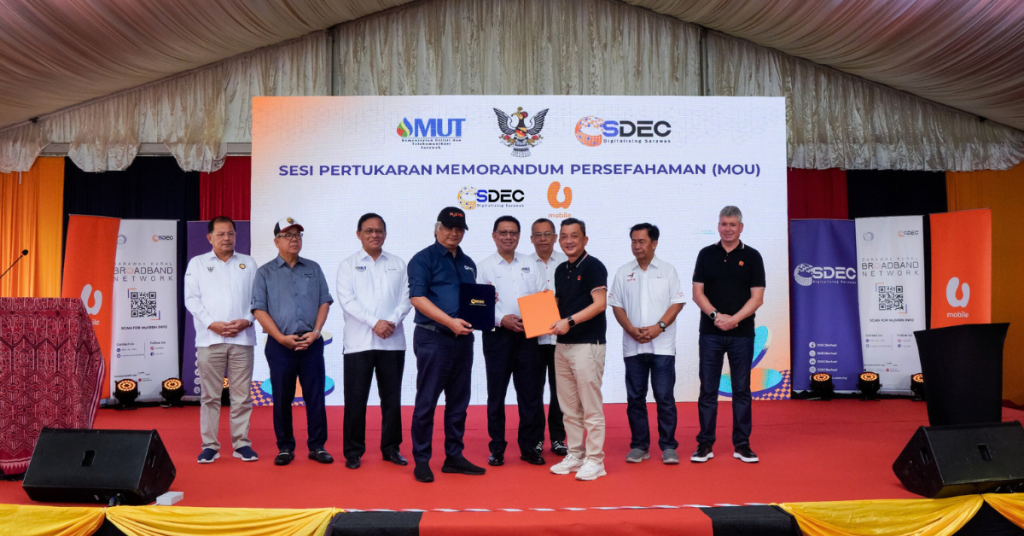
The world we live in today is highly digitalised. For one, you’re likely reading this either on your laptop or your phone.
However, even though Malaysia has made many great strides when it comes to technological advancements, there’s still a digital divide that exists in our country.
To narrow this divide, U Mobile and Sarawak Digital Economy Corporation Berhad (SDEC) have decided to team up, working together to empower Sarawak’s SMEs with cutting-edge 5G technologies.
The two parties signed a Memorandum of Understanding (MOU) on January 17 to mark this collaboration.
Their partnership will not only enhance enterprise digitalisation in the state, but also allow them to explore solutions such as small cell technology to further narrow the digital divide by providing connectivity to underserved areas.
Wholly owned by the Government of Sarawak, SDEC operates under the Ministry of Finance and New Economy’s purview. That means it’s mandated to spearhead Sarawak’s digital economy initiatives and transform Sarawak into a “Digital Economy Powerhouse.”
Incorporated in January 2018 and operationalised in July 2020, its main objectives are to revolutionise Sarawak’s economy and industries as well as to spur socio-economic growth and advancement.
This partnership with U Mobile is one of many ways that the organisation is accomplishing its mission.
What it entails
With this partnership, U Mobile will work with SDEC on initiatives that accelerate digital transformation for SMEs in Sarawak, further closing the gap for those in underserved areas.
To drive the adoption of 5G technologies and solutions in Sarawak’s SMEs, the two organisations will carry out initiatives such as providing 5G network connectivity, educational programmes, devices, and innovative use case solutions.
This will all help local businesses enhance their competitiveness in the digital economy.
Additionally, following the success of a small cell proof of concept in providing coverage to a longhouse in Long Lawen, Sarawak, U Mobile and SDEC aim to explore similar solutions to provide connectivity to rural and underserved areas.
Beyond their MoU, both organisations are also currently collaborating on the Sarawak Multimedia Authority Rural Telecommunication 600 (SMART600) project.
Through this project, U Mobile’s 4G coverage will be made available to serve rural communities in Sarawak through Multi-Operator Core Network (MOCN) technology.
These efforts highlight U Mobile’s ongoing commitment to improving digital connectivity and access for Sarawakians.
According to the blueprint
The partnership aligns to the Sarawak Digital Economy Blueprint 2030, which envisions a robust digital economy fostering an inclusive and green digital society by 2030.
It also complements U Mobile’s drive to narrow the digital divide in the nation and enable Malaysia to become a technology-enabled high income nation.
“As Malaysia’s future second 5G network provider, U Mobile is committed to play a critical role in realising Malaysia’s goals of being a digitally enabled high income nation,” said Alex Tan, Chief Sales Officer of U Mobile.
“By collaborating with SDEC, we aim to empower Sarawak’s communities and businesses with cutting-edge 5G technology and digital solutions, ensuring that no one is left behind in the journey towards a digitally connected future.”
Dato Ir. Ts. Sudarnoto Osman, CEO of SDEC, shared: “As Malaysia progresses in its digital journey, fostering industry collaboration including exploring potential 5G use-cases with U Mobile is essential to ensuring Sarawak remains at the forefront of technological advancements.”
“Our focus remains on empowering the people and businesses of Sarawak with access to cutting-edge digital solutions, driving sustainable growth and innovation.”
Also Read: Inside the exclusive programme for startups by Grab Malaysia, GXBank leaders & Endeavor Malaysia
Featured Image Credit: U Mobile & Sarawak Digital Economy Corporation Berhad (SDEC)
4 highlights of MRANTI’s I-Nation 2024 that show why you definitely shouldn’t miss this year’s
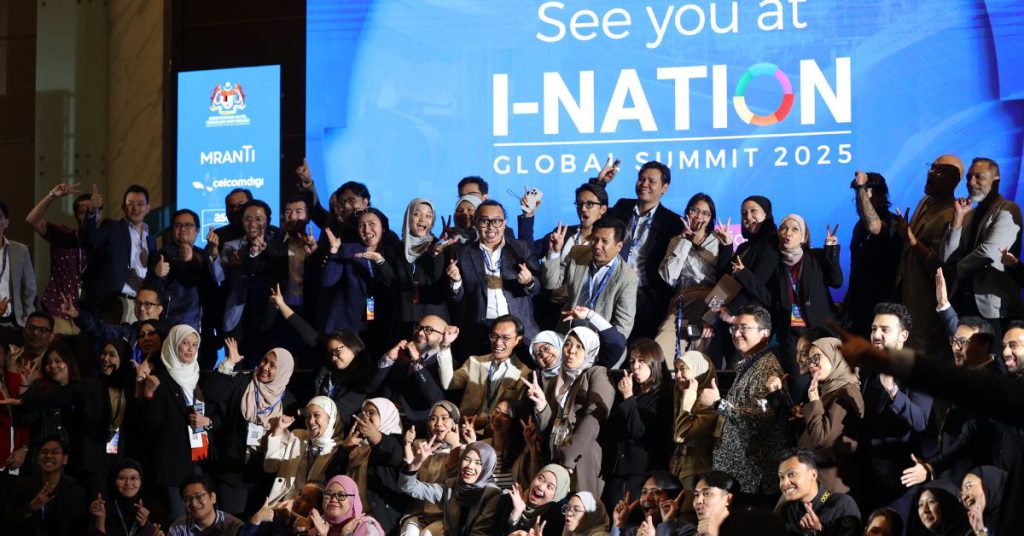
I’ve got to give it to MRANTI—their I-Nation Global Summit 2024 was probably one of the best I-Nations (or E-Nations, before MRANTI was established) I’ve been to.
Granted, I didn’t attend every single one in history, but if 2024’s was any indication of the event’s quality moving forward, sign me up for future ones right now.
Over the course of three days, various key dialogues were held. From the experience, here are four reasons why I think future iterations of the event will be worth your time.
Actually interesting expert lineups
First of all, who’s talking always matters. Different experts, different insights, and I-Nation 2024 brought together knowledgeable speakers in their respective fields to have impactful dialogues.
Names we saw included Prof. Dr Jomo Kwame Sundaram, Research Advisor at Khazanah Institute, Jack Melcher-Claësson, Head of Accelerate at Epicenter Stockholm, MRANTI’s CEO Datuk Wira Dr. Hj. Rais Hussin Hj. Mohamed Ariff, and many more.
One person I was personally anticipating listening to, though, was Tony Fernandes. Everything I’ve previously known about AirAsia, I’ve learnt online, so it was intriguing to hear what the man himself could share.

And share, he did—very charismatically—what AirAsia’s biggest assets for business growth have been, which we covered in a separate article here.
For 2025’s I-Nation, I would like to hear from even more exciting names that we don’t often see gracing the stages of business and industry events.
A big-picture focus
A core theme of I-Nation 2024 was bridging local and global markets, which is crucial as Malaysia continues to develop.
We still have big challenges when it comes to things like food security and healthcare transformation, and that’s where having global leaders share their strategies really helps.
I-Nation brought such experts together and allowed for the first step to deeper collaboration and powerful action—open discussions.
For example, there was the National Technology Innovation Sandbox (NTIS) Global Sandbox Forum which saw speakers from around the world share their sandbox success stories.
They talked about the importance of having an interconnected innovation ecosystem, the need for governments to be agile when it comes to policies, and the value of cross-collaboration amongst stakeholders and ecosystem players.
Hopefully, stakeholders in the audience were taking notes from the forum and other satellite events at I-Nation 2024 like the Ecosystem Builders’ Summit (EBS), Supercharger Finale 2024, and HealthTech Innovation Connect.
Bold, realistic discussions
I think it says something about a talk-heavy event when you actually want to lock in for a bulk of the conversations, even if the industries don’t involve you.
The key dialogues were well-curated in terms of topics that actually mattered, and many speakers tactfully shared opinions that would push the envelope for their sectors.
Not too much jargon was thrown around—the priority was to let the public know what’s going on and what’s being done, or needs to be done, to improve things.
One example that stuck with me was during the discussion of “Malaysia’s Efforts in Advancing Sustainable Agriculture and Robust Food Systems.”

Some insights boldly shared included acknowledging that Malaysia is not yet self-sufficient for various crops, and despite a lot of our pride in our agritech, the industry still has not gone through massive innovation.
Subsidies to strengthen food security are also likely not in the right place, and we need economic reform to tackle monopolies and cartels.
I-Nation’s panels gave us a realistic look at how Malaysia is doing (good or bad) in several sectors, and it was refreshing to witness instead of the “walking-on-eggshells” conversations that I feel some business events tend to lean towards.
They’re walking the talk
At the end of the day, though, hours upon hours of talks mean nothing if there’s nothing to show for them later on.
Thankfully, that’s not the case with MRANTI and I-Nation.
CEO Dr. Hj. Rais Hussin said that what they’re aiming to do is to create a report of sorts after every I-Nation to follow up on what has been done since the discussions, and it will be shared so that stakeholders can be accountable.
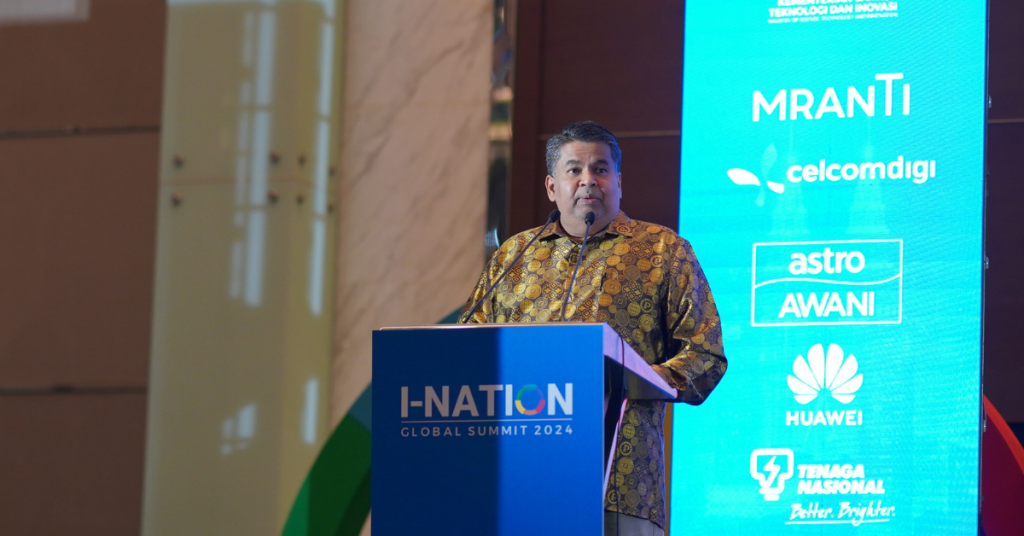
It’s a great move to take I-Nation and MRANTI’s efforts to the next level and shows that they’re serious about making a tangible impact to transform Malaysia for the better.
I’m all for that, and you should be, too.
- Read more about MRANTI here.
Also Read: Critical convos with a focus on impact: How MRANTI is bridging local & global markets
Featured Image Credit: MRANTI
Tupperwares exist, so why is this expat designing her own silicone containers in S’pore?
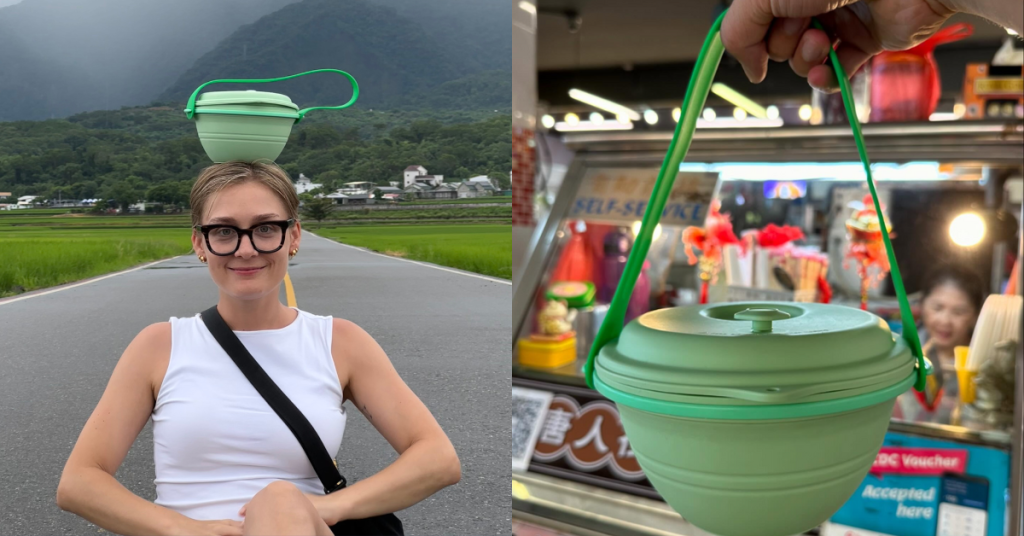
You probably have at least one Tupperware or container sitting at home.
So, why is this Singaporean startup trying to reinvent the wheel with their own container?
Behind the brand
Sometimes it takes an outsider to notice problems, and that’s what Julia Chia Ciaciek has done.
Originally from Germany, she is the CEO and co-founder of kūpaa.
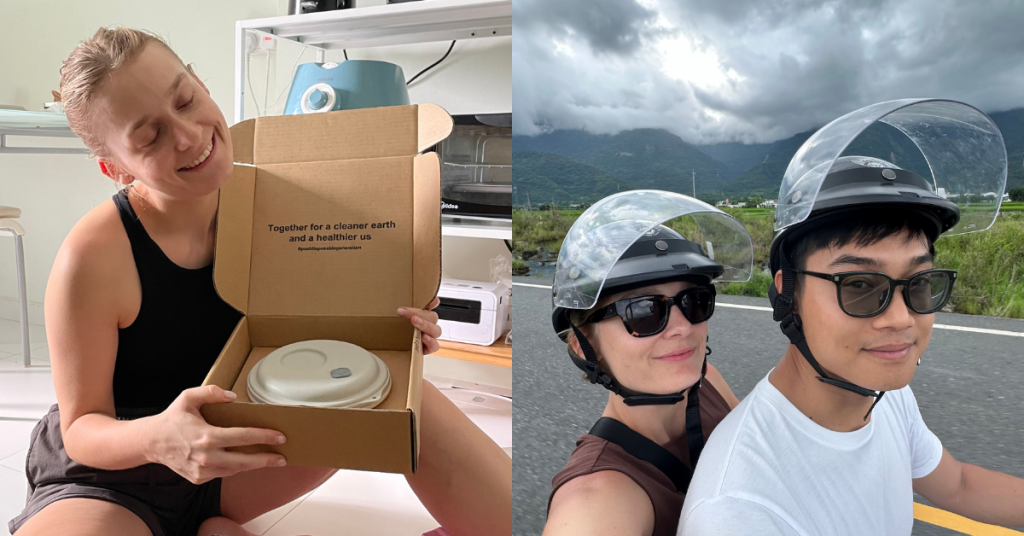
Before moving to Singapore, she earned her Bachelor’s degree in Business Administration at Ludwig Maximilian University in Munich. In 2021, she made the bold decision to pursue a Master’s in Management & Sustainability at Singapore Management University.
“I was drawn to Singapore’s unique blend of cultures, its role as a global innovation hub, and its commitment to sustainability and progress,” she explained.
Having worked at various startups and tech companies, why did she end up trading a stable career for entrepreneurship?
“The turning point came when I was laid off from my previous job, leaving me with no more excuses or safety nets to fall back on,” Julia told Vulcan Post. “In that moment, I realised it was time to fully commit, and dedicate my undivided attention and focus to building kūpaa.”
Resolving a real issue
While living in Singapore in 2021, Julia couldn’t help but notice the excessive amounts of single-use plastic used for food takeaway.
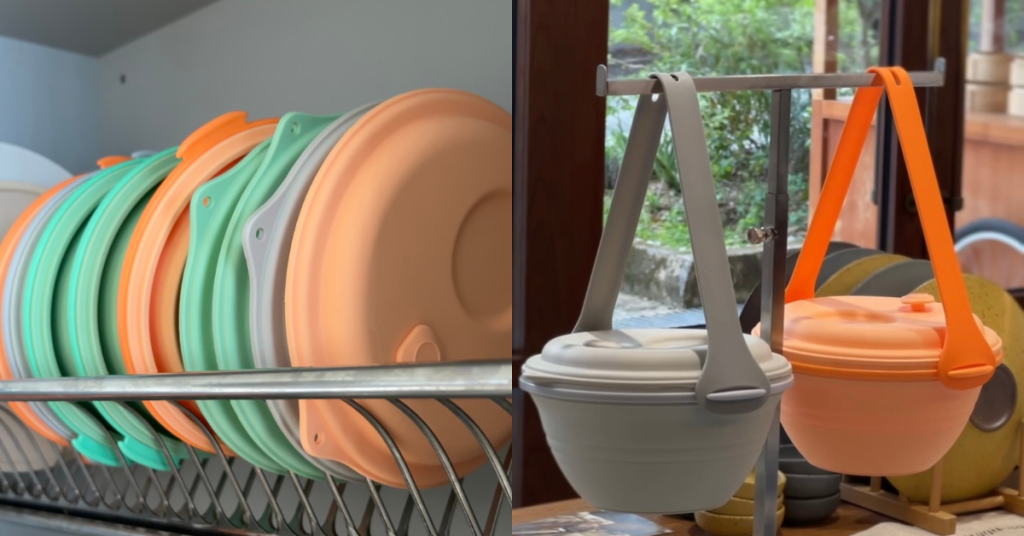
During a family Christmas dinner where Julia and her Singaporean co-founder (and now husband) went out to pick up takeaway food. They were struck by the sheer volume of single-use plastic containers and packaging for the food, sauce, utensils, and carrier.
“It wasn’t just an abstract observation—it felt personal and frustrating,” she said.
“My husband and I often struggled with the same issue when trying to enjoy our favourite local dishes like Laksa, Yong Tau Foo, or Mee Siam,” she elaborated. “Finding a way to take these dishes home in a healthy, sustainable, and convenient way felt nearly impossible.”
This made them wonder: Why is there still so much single-use plastic being used? Why aren’t there better options available?
From there, they began deep diving into the single-use plastic issue. The environmental consequences were devastating, but what was even more shocking were the health risks associated with plastic dependency.
“Motivated by a cleaner earth and healthier living, we decided to tackle the problem head-on and co-founded kūpaa in 2022,” Julia said.
The idea was straightforward: To design a takeaway solution that is not only culturally relevant so it’ll actually be used and not tucked away in the back of a cabinet but also healthy, inclusive, and aesthetically pleasing.
Basically, to make something people would proudly use every day.
With that agenda, the duo committed to R&D in 2022. They spent the year on experimentation, learning, and refining. By 2023, they took the big step into mass production.
Designing the perfect container
The design process for kūpaa’s Duet was an intense and meticulous journey, Julia said.
“My co-founder, in particular, quit his day job to dedicate countless hours—day and night—refining the design to ensure it addressed as many customer pain points as possible and also offered certain aesthetics,” she said.
To understand pain points faced by users, they turned to an unexpected source: customer reviews on ecommerce platforms for existing takeaway solutions.
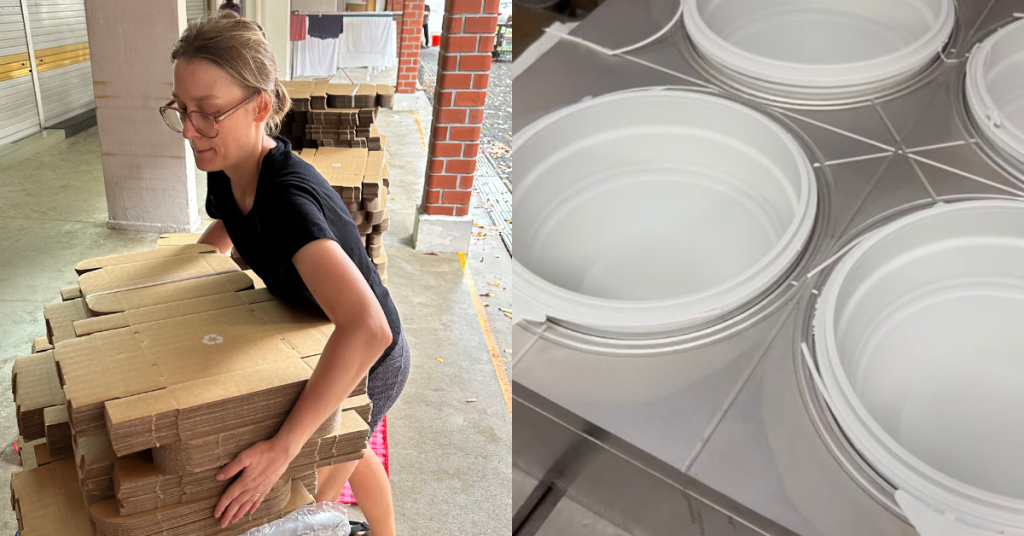
By resourcefully analysing what customers liked and didn’t like, they were able to come up with a design that they believe hits all the marks.
This iterative process of their design spanned over 1.5 years. With neither co-founder having formal experience in product design, it was an experience that required immense patience and persistence.
After extensive research, the two chose premium food-grade silicone as the primary material as silicone offered a unique combination of benefits that other materials couldn’t match.
Not only is it safe for hot and oily foods, it’s flexible and collapsible, microwave-safe, lightweight, and durable.
Julia assured that their silicone is certified to meet both the LFGB standard (Lebensmittel-, Bedarfsgegenstände- und Futtermittelgesetzbuch)—the highest certification for food-safe silicone—and the Singapore Food Authority (SFA) standards.
But kūpaa’s product definitely isn’t the only silicone container available on the market. Yet, Julia believes the container stands out for a myriad of reasons.
“What sets kūpaa apart from the many options available today, including other silicone-based products, comes down to a combination of quality, intentional design, aesthetic appeal, and long-term vision,” Julia said.
Catering to local lifestyles
You’d think that it would be counterintuitive to ask people to buy yet another container in an effort to be more environmentally conscious, though.
To that concern, Julia shared that kūpaa’s primary goal is to reduce reliance on single-use disposables—not to promote unnecessary consumption.
“We’ve always been clear and transparent about this: if someone already owns reusable containers that they actively use, there’s no need for them to purchase a kūpaa Duet,” Julia said.
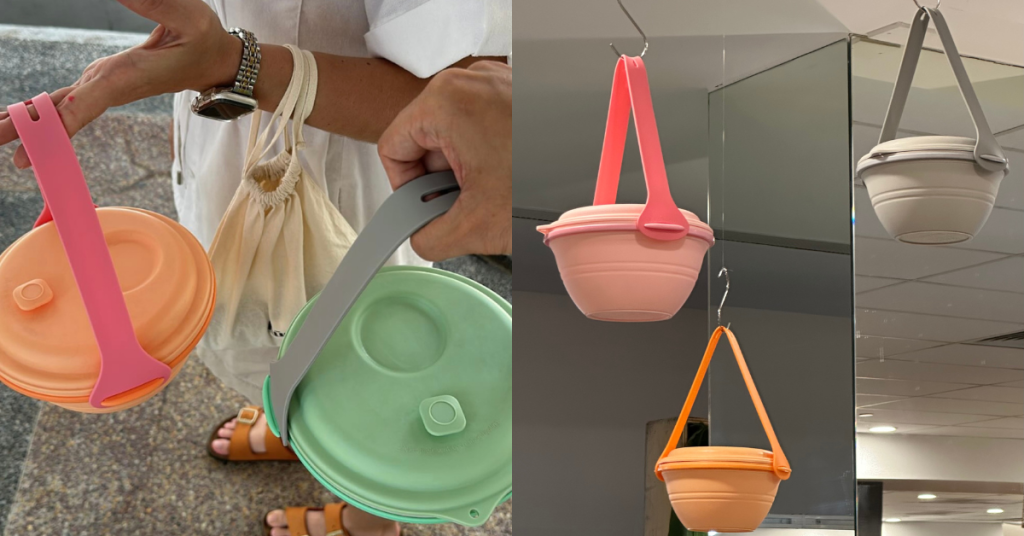
“Our focus isn’t on selling more products, but on encouraging mindful choices and offering a reliable solution for those who truly need it.”
However, the reality is that many people don’t use their existing reusables because they simply do not fit into their lifestyle.
Additionally, as she mentioned, some reusable containers are made from plastics that may pose health concerns, especially when exposed to hot foods.
“In such cases, it’s not just about sustainability—health and safety takes centre stage, ensuring that the products we use daily are safe, reliable, and truly fit for purpose,” she said.
Reaching the masses
kūpaa was officially launched in July 2023. 1.5 years in, the reception and interest have been “incredibly encouraging and continue to grow steadily,” Julia said.
She believes that people were drawn to the kūpaa Duet for its aesthetic appeal as well as the practical and thoughtful design.
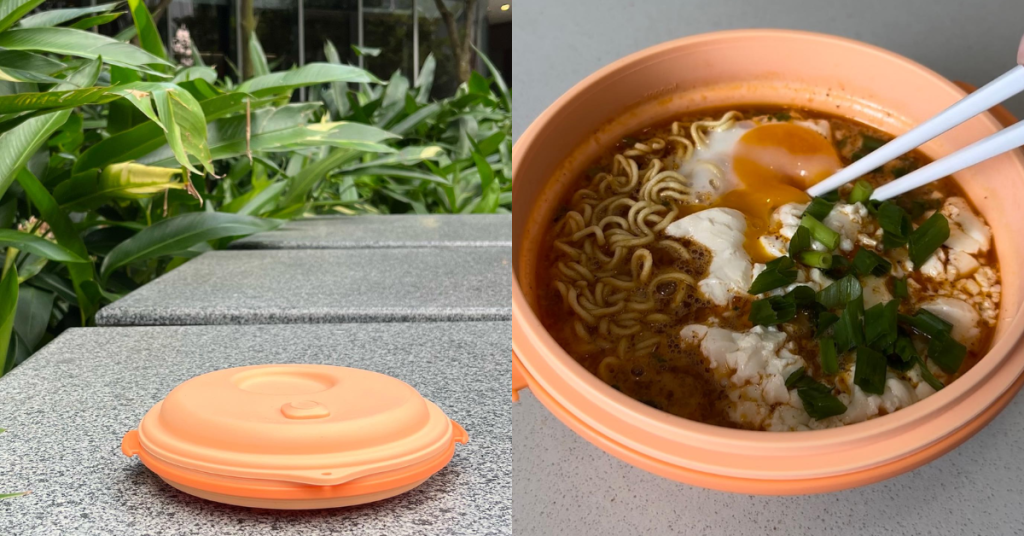
Julia admitted that a huge challenge the team has faced has been getting the word out about their brand and product.
“We knew we had a great product that people genuinely love, and there was definitely a certain level of product-market fit,” she said. “However, figuring out how to grow our reach, build awareness, and create momentum proved to be an entirely different challenge.”
Primarily targeting working individuals, the team has found a level of success focusing on a mix of organic social media content, targeted ads, and TikTok live streams. These channels allow them to showcase the product in action, share their brand story, and build genuine connections with their audience.
Thankfully, word-of-mouth has played a significant role in their growth. “People who have tried the Duet genuinely love our solution and often gift it to their family, friends, and colleagues,” Julia shared.
Scaling thoughtfully
Currently, the team is focusing on perfecting their core product, the kūpaa Bowl & Carrier Duet, and offering it in a variety of colors.
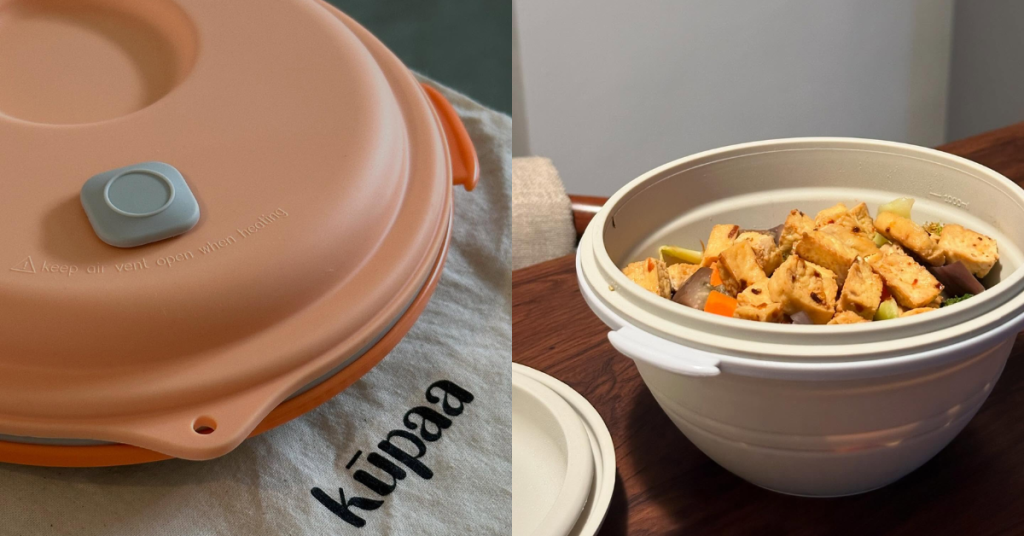
Rather than rapidly expanding the product range, they believe in refining and optimising their flagship product.
That said, they do plan to expand their product range thoughtfully, ensuring that every new addition aligns with kūpaa’s mission of sustainability, innovation, and mindful living.
In the long term, she hopes to see kūpaa become a globally recognised lifestyle accessory brand that combines functionality, sustainability, and style.
“We want our products to not only solve everyday problems but also become a statement of mindful living and an essential part of people’s daily routines worldwide,” she concluded.
Also Read: 5 reasons Tokyo makes an ideal launchpad for M’sian & S’porean startups to scale globally
Featured Image Credit: kūpaa

